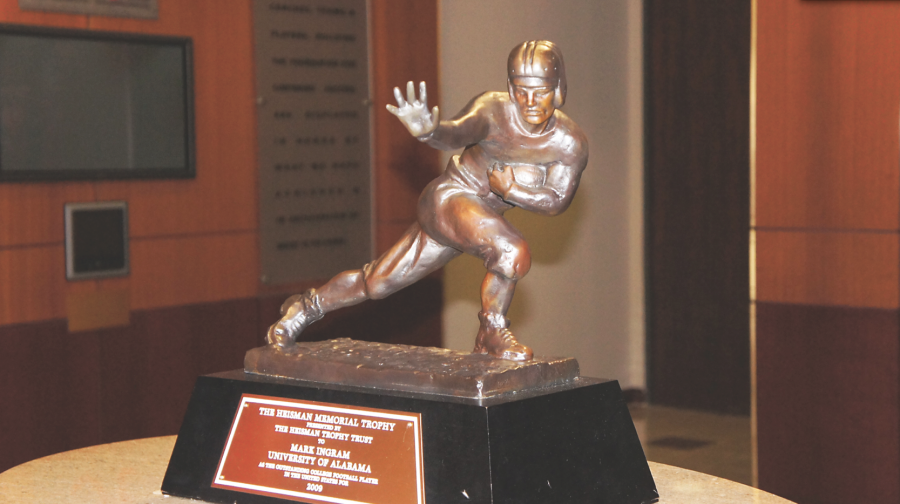Mark Ingram won The University of Alabama’s one and only Heisman Trophy in 2009, and if the Crimson Tide wants to keep winning national championships, it should hope the stiff arm trophy count remains the same.
The trophy, which is given to the nation’s most outstanding player, may represent the best player, but it is far from determining the best team.
Usually, it signals that a particular player has enough influence on his team’s offense that its win-loss column will change dramatically the second he leaves.
In the Nick Saban universe, that is not a good thing. Saban speaks about how a good offense has a lot of balance, and since he took over in 2007, his teams have proved it by winning three national titles in four years. Offenses that are based around one player are far from balanced but can often experience success.
Both Cam Newton, who won the Heisman for Auburn in 2010, and last year’s winner, Johnny Manziel, were players who came into their respective programs and immediately took their teams from good to great. However, both teams heavily focused their offense on those players, and it didn’t always pay off. While Auburn went undefeated and won the national championship in Newton’s only season, it also caused more problems after he left. The Tigers faced an offensive identity crisis for the next several seasons without Newton as quarterback and were forced to make several changes to their formerly potent offense. Time will tell if Manziel and Texas A&M experience similar challenges in the upcoming season now that teams are more prepared for the run-and-gun quarterback.
For Alabama, a successful season means that no single player receives all of the credit. While websites like Heisman Pundit have both quarterback AJ McCarron and running back T.J. Yeldon on their Heisman watch list, fans should hope neither win the award if they want the Crimson Tide to return to the national championship.
But what about Mark Ingram? Ingram won the Heisman in the same season that Alabama won its 13th national title, so it can be done. However, he also won in the closest finish in the award’s 78-year history, finishing only 28 points ahead of Stanford’s Toby Gerhart. In 2009, the run-heavy Crimson Tide also had a few close games that probably could have been avoided with a stronger passing game.
Although an unbalanced Tide could win the title again and capture another Heisman, the path would not be easy. It would also mean that one side of the offense had completely collapsed, and offensive coordinator Doug Nussmeier had been forced to change his game plan.
It’s also unfortunate that the Heisman trust does not factor in past successes along with numbers. While players such as McCarron and Yeldon may not end the season with the highest individual statistics, it’s hard to say a player is not “the most outstanding” when they have at least one national title game under their belt, or even two. A career full of wins should count for more than one season’s numbers, but for now it will not.
This season could change that, however, with an Alabama team full of talented seniors who have won three national championships in their time at the Capstone.
Regardless, most would have to agree that one trophy is a small sacrifice to bring a 16th national title to Tuscaloosa.









